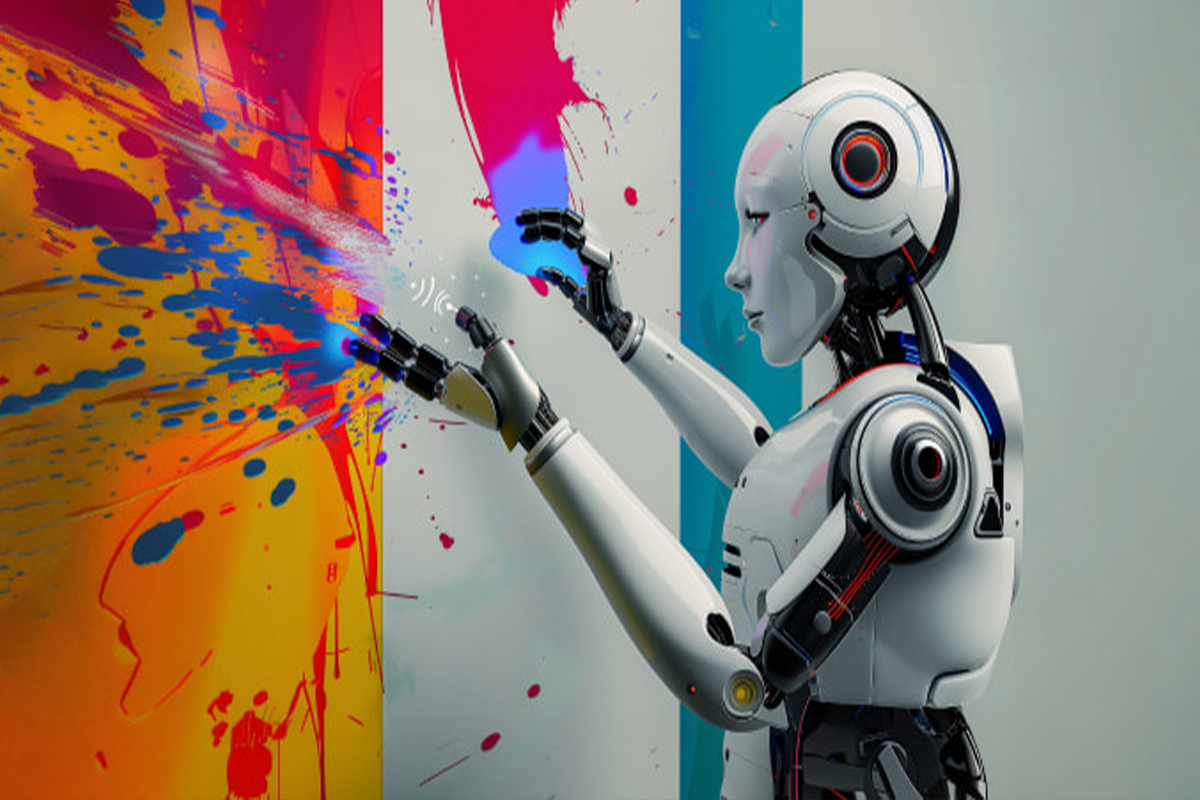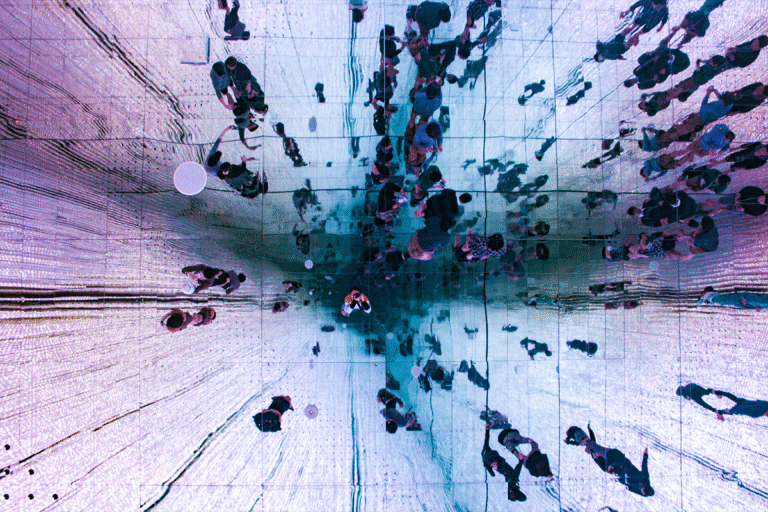The question really is really if and how AI is disrupting creative design…that said, it’s really just another transition. From the introduction of paste-up and keyline techniques in print to today’s generative tools, the creative industry has weathered waves of disruption. As AI-powered systems enter the mainstream, some fear for their jobs. But as history shows, embracing change — and up skilling alongside it — is the path to new opportunity (and to be honest…it’s just a reoccurring trend to be embraced).
1. Echoes from the Past: Paste-up, Keyline, and Creative Rebirth
In the print era, designers wielded knives, glue and precision layout tools. It was painstaking, analogue craft. When digital layout tools emerged in the late 1980s and early 1990s, many designers felt threatened, in fact I was one of them, worried my creative, meticulous skills would be replaced. I mean, why should someone who hasn’t a creative bone in their body be able to click and drag an icon from a catalog so quickly when I’d spend hours of work creating!!!
Yet those who embraced digital tools discovered new freedoms: speed, flexibility, experimentation. Paste-up evolved into desktop publishing. The most innovative artists and agencies rode that wave into a new golden age of branding and layout design.
This parallel holds true today. Just as paste-up didn’t replace creativity — it expanded it — AI is extending the creative toolkit, not erasing the creative impulse.
2. What Makes AI Different — and What Makes It the Same
A. The Rise of Generative AI
In the 2020s, foundational AI models like GPT-4, DALL·E, Midjourney, and Stable Diffusion broke barriers in automated text, image, and even video creation. These tools can now draft copy, generate visuals, produce short animations — and even assist in ideation — based on simple prompts.
B. Parallel: Digital Tools in Print
Just as Photoshop replaced cutting and pasting with digital layers and editable files, AI replaces repetitive, basic creative tasks with algorithmic efficiency. But the strategist, conceptual thinker, and brand storyteller? Those roles remain inherently human.
3. Why People Fear AI — and Why Some Fears Are Real
A. Job Displacement
Concerns are justified. The BFI recently warned that AI training on 130,000 film/TV scripts threatens the future of junior roles, writers, and VFX artists in the UK’s £125 billion screen sector Similarly, in marketing and copywriting, entry-level positions are already disappearing as AI handles many routine tasks.
B. Industry Voices
Business Insider reports Canva’s co-founder yanked back on early criticisms — painting resistance as the same short-sightedness designers had toward Canva’s early launch.
Meanwhile, Harvard Business Review highlights that AI could “upend the world of content creation” by automating marketing, design, and even software development..
C. Regulation and Ethics
Copyright, licensing, and compensation for artists remain contentious. A £125 bn sector is calling for AI firms to share copyright revenues and protect entry-level jobs. This isn’t alarmism—it’s a necessary protection phase during rapid change.
4. The Real Opportunity: Augmentation, Not Erasure
A. Human + AI = Enhanced Creativity
Studies show that collaborating with generative AI improves performance by ~26% compared to working soloarxiv.org. Creators can curate, refine, and humanise outputs.
The Economist noted that AI is “more likely to help artists make new kinds of art, rather than replace their jobs”facebook.com+2economist.com+2colognegamelab.de+2.
B. AI as Creative Accelerator
Adobe, Canva, and Clorox report that AI frees creatives to focus on storytelling and strategy wsj.com. You spend less time on repetitive tasks and more time on conceptual design and emotional resonance.
C. Enabling Brave, Risk-Taking Creativity
Some brands fear that safe ideas amplified by AI will become dull. Others see AI as a launchpad for bold campaigns, able to test daring concepts quickly and cheaply
5. The Risk If We Don’t Adapt
A. Dead-End Careers
Those who resist AI may find their roles obsolete. AI’s relentless efficiency rapidly replaces routine tasks — especially for juniors. Without embracing AI, creativity becomes commoditised.
B. Diminished Skill Sets
Without AI, you may lose relevance. The tools challenge us to rethink how we work — from ideation to finalisation — and to develop soft skills beyond execution.
C. Ethical and Legal Backlash
Firms using AI irresponsibly may face lawsuits, IP backlash, and reputational damage.
6. Where to Upskill: Be Future-Proof
A. Prompt Engineering & Fine-tuning
Writing prompts and guiding AI tools is a skill in itself — understanding nuance, tone, brand voice, and iteration.
B. Human-Centred Curation
Learning how to review, edit, and adapt AI outputs — drawing on emotional intelligence, diversity awareness, and brand context.
C. Ethics & Copyright Literacy
Understanding licensing frameworks, fair use, and attribution in training data will be essential.
D. Cross-disciplinary Collaboration
Working with technologists and data teams, you must manage AI pipelines and integrate outputs into larger ecosystems.
E. Creative Strategy & Critical Thinking
These human-centric roles become the most valuable — AI may generate options, but humans choose the direction.
7. Practical Applications Across Roles
| Role | AI Applications | New Focus |
|---|---|---|
| Graphic Designer | Text-to-image tools (e.g. Midjourney) | Visual curation, brand context |
| Copywriter/Content Creator | LLMs for outlines, drafts | Refinement, brand tone |
| Art Director/Creative Lead | Campaign mock-ups, variant ideation | Strategic oversight |
| Marketer | Segmented ad generation, A/B variants | Messaging strategy, data evaluation |
| UX/UI Designer | Wireframe generation | Interaction planning, accessibility |
| VFX/Animation Artist | Asset generation | Integration, aesthetic coherence |
8. It’s Just a Transition — Embrace It
Creativity evolves through technology. Paste-up and keyline were replaced by desktop publishing — metamorphosis, not extinction. Today, AI is merely the next iteration.
Resisting is a luxury few can afford. But leaning in — learning, guiding, leading — opens new levels of creative expression and efficiency.
9. The Creative-Driven AI Toolkit (Start Here)
-
Start simple: Use ChatGPT or Claude to generate prompts, moodboards, or campaign sketches.
-
Set guardrails: Create brand “trainings” or prompt guides for coherence.
-
Build an evidence log: Save examples that show AI’s impact in productivity or concept generation.
-
Network: Join creative/AI communities to share learnings and iterate fast.
-
Partner with technologists: Learn from data engineers — they know the models.
10. A Vision for the Future
In five years, “AI-aided designer” or “prompt strategist” will sound as normal as “graphic designer” does today. The next wave of senior creative roles will focus on:
-
AI Ethics Officer: ensuring fairness, diversity, and transparency in generated content.
-
Creative-Orchestrator: guiding multi-modal projects across AI-generated media.
-
Hybrid Creatives: fluent in code, design, and prompt workflows.
Those who lead the learning curve will define how the next era of creativity unfolds — both as artists and stewards of integrity.
11. How I Can Support Your Transition
I help creative organisations — from startups to established agencies — navigate this exact transition:
-
Executive & team workshops: Hands-on sessions in AI tooling, prompt labs, and ethics.
-
Strategic AI audits: Identify where AI can enhance workflows and where governance is needed.
-
Tailored upskilling programmes: For UX, design, marketing, and creative teams.
-
Ongoing mentorship: For leaders and practitioners, through coaching, peer networks, and project-based support.
-
Board & advisory guidance: Helping leadership teams understand risk, compliance, and creative opportunity.
If innovation is your goal, I ensure your people, teams, and thinking evolve alongside AI — not behind it.
Final Word
AI isn’t an invader — it’s a transformative tool. The real choice isn’t about resisting or replacing. It’s about who you choose to be in this next chapter: a passive bystander or back to leading to where you need to get to. You’ve done it before – embrace to adapt and lead OR steer the inevitable change.




